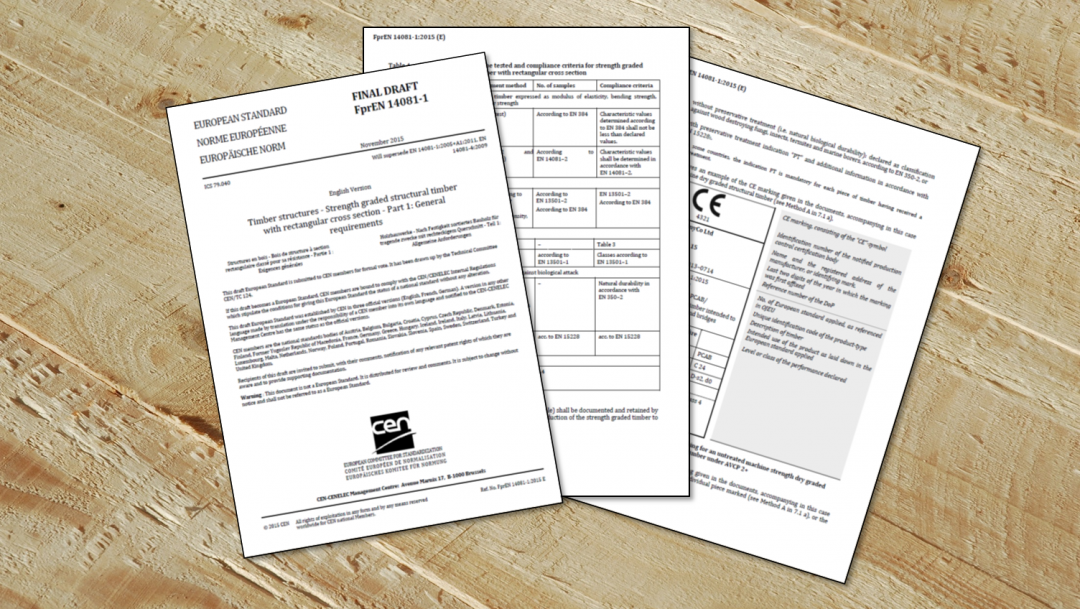
The concept of dry graded timber is a bit confusing. It is not the opposite of wet grading. Here is an attempt to clarify things:
There is what we call wet grading or green grading, but it can give you dry-graded timber. That is to say the actual strength grading is done while the timber is green, but grading is “completed” once it is dried. Completed meaning, doing the checks on distortion, checks, fissures etc. The term dry-graded applies to the timber. The term wet grading / green grading applies to the grading process.
EN14081-1:2016+A1:2019
3.1
dry-graded structural timber
timber for which grading has been completed after it has been dried
When we are drafting EN14081-1:2016 we had some discussions about what dry-graded really means and what the opposite of it was – and the opposite is just “not dry-graded”. Yes yes… EN14081-1:2016 is not the Harmonized / Designated standard and we are still using the previous version, but the committee (CEN TC124 WG2) was not thinking they were changing the definition – they were thinking they were making the existing meaning clearer.
This is the point when EN14081-1 started using the hyphen in dry-graded to indicate this concept is not the same as graded timber that is dry. (We might, one day, see this magic hyphen appear in strength-class, but this is a topic for another day).
Now, if you are familiar with the British Standard for visual grading softwoods, you might be wondering – doesn’t this imply that the opposite of “dry graded” is “wet graded” – and that you can say “wet graded” to mean timber that isn’t “dry graded”?

BS 4978 was only amended after the work on EN14081-1 and the main objective of that amendment was to bring the standard in line with regards to the marking requirements. The wording could still be made clearer.
BS 4978 clause 4.6.2 is about dry graded timber (and should be dry-graded with the hyphen really). Note that it only talks about the mc at which fissures and distortion are checked, not everything else.
BS 4978 clause 4.6.3 is titled “wet graded timber”, but the name is a bit misleading. It would be better to include that text within clause 4.6.2 because it really is also talking about dry graded timber. It gives some rules about when you should not apply the dry graded criteria. This “wet graded” name is not used in the European Standards, and it risks two confusions:
- That timber cannot be graded green and produce dry-graded timber (it can)
- That dry-graded timber is definitely going to be low moisture content and not dry-graded timber is definitely going to be high moisture content. (Leading to think you do need to specify moisture content separately).
Note there is also a limit on thickness of 100mm … I don’t really know why we have that as timber of that size can be kiln dried, or be air dried over a long time – and if you measure moisture content properly this should be handled by the moisture content requirements. Possibly we have this because we do not trust that moisture content will be measured properly in a production situation.
